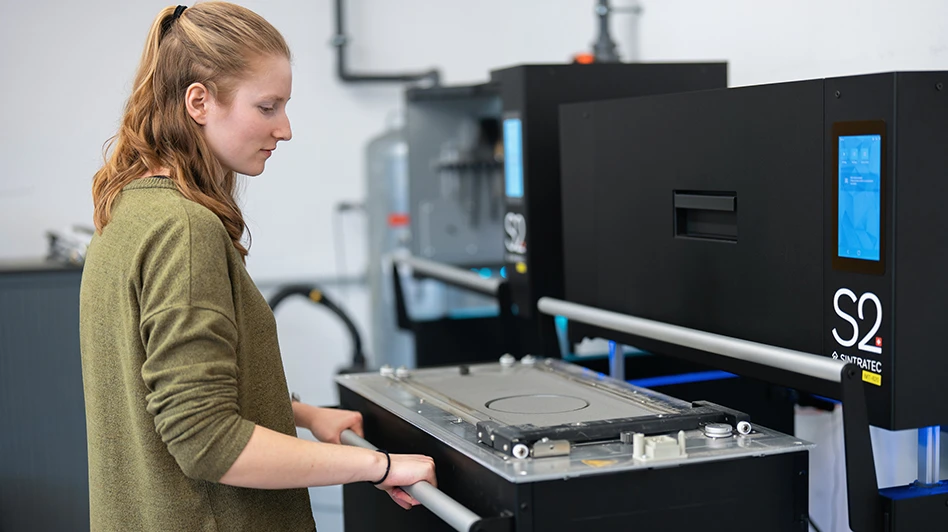
Credit: Sintratec | https://sintratec.com
With around 100 engineers, Information Management Technology IMT headquartered in Buchs, Switzerland, is one of the major players on the Swiss engineering market. In recent years, the company has been particularly successful in the fields of medical technology and pneumatics.
“Our core competence is the complete development of electronic devices with embedded software for industrial customers and especially for medical device manufacturers,” says Benno Bieri, COO of IMT.
The company supports its customers from the initial idea with concept studies to the production-ready application and throughout the entire product life cycle.
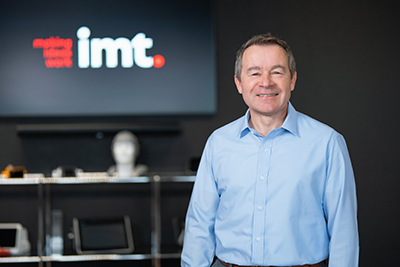
COO Benno Bieri is responsible
for the operational business of IMT.
Embracing modern technologies
IMT’s credo is to be on the cutting edge of technology. A test laboratory with state-of-the-art equipment, for example for special environmental simulations, was just recently set up. Not surprisingly, the company has also been employing additive manufacturing processes for more than a decade.
“We used to source 3D printed parts from external service providers,” Bieri says. “Now we have several 3D printers in-house as demand has grown and we rely heavily on rapid iterations.”
As customer requirements are becoming increasingly dynamic, these flexible technologies are needed more frequently and already in the early project phases.
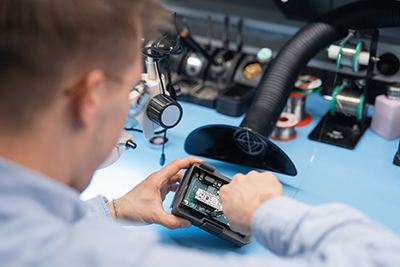
Numerous departments at IMT benefit
from modern manufacturing technologies.
Versatile manufacturing processes
Christoph Untersander is head of design at IMT and responsible for usability and prototyping. Together with the mechanical department, he uses various 3D printing (3DP) processes to verify designs and simulations. “Depending on the requirements we have for the part, we use appropriate technologies such as FDM (fused deposition modeling), SLA (stereolithography) or SLS (selective laser sintering),” Untersander says.
Untersander’s team turns to SLS when the prototype needs to have isotropic – i.e. mechanically uniform – properties and an optically homogeneous surface.
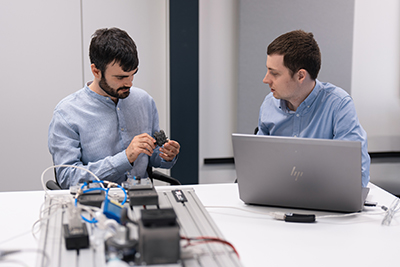
As Head of Design, Christoph Untersander (left)
often relies on 3D printing processes.
Swiss SLS 3D printer at work
A Sintratec S2 has been in use at IMT’s 3DP center since late 2022. The engineers use it mainly to print prototype parts for internal development projects.
For Vanessa Hug, designer at IMT, the SLS process offers clear advantages. “Because SLS does not require support structures, we are much freer in terms of design and can also create complex shapes,” she explains. Hug is also responsible for operating the Swiss SLS 3D printer and supplying the other departments with the required parts. To that end, the designer relies on the PA12 material. “We use PA12 because it meets our requirements for accuracy, mechanical strength and gas tightness,” Hug says. The latter is especially important for pneumatic applications.
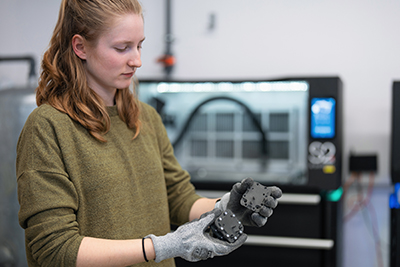
When precision and surface quality are important,
designer Vanessa Hug produces parts with the
Sintratec S2.
Covers, housings, complex parts
A specific application of additive technologies is the internal test system Beverin. The setup allows various components and sensors to be tested and measured on a modular basis.
“For this test system, we manufacture numerous housings, cover elements and complex valves for gas flow measurement using the SLS process,” Untersander explains.
For these parts, dimensional accuracy in all directions and surface finish are particularly important to ensure that the end product is as close to reality as possible. Other 3DP processes, such as FDM, would quickly reach their limits here.
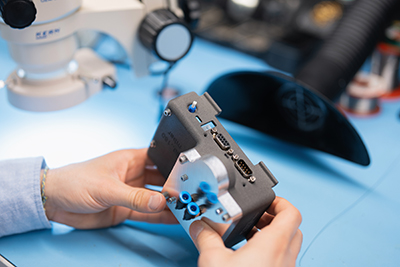
Selective laser sintering is likely to become
increasingly important at IMT in the future.
Gas flow measurement with SLS
Untersander presents a part that’s currently being verified on the test system: A complex valve for gas flow measurement. “After the simulation, we print a first prototype, which we install in our test environment and carry out measurements,” he explains. “Then we measure the gas flow and try to optimize the geometry based on the sensor readings.”
The design freedom of SLS enables construction approaches that would previously have been unthinkable.
“And if there are adjustments, we’ll have the next part in our hands tomorrow,” Untersander says.
Simulate – test – iterate
IMT development works according to the Simulate – Test – Iterate principle.
“Once we have met the specified criteria with the additive part, we can move one step closer to series production,” Untersander says.
The combination of virtual simulation, a realistic test situation, and rapid iteration has proven its worth to the engineering company.
“This speed is particularly crucial, because every day saved is very valuable to us,” Bieri emphasizes.
The next step will be to 3D print parts that cannot be produced in any other way in series. In Bieri’s opinion, additive technologies will continue to gain importance at IMT in the future.
Proven Swissness
After more than a year and a half in use, the SLS process has become an integral part of research and development at IMT. It’s no coincidence that a Swiss SLS 3D printer, in this case the S2, was chosen.
“We really appreciate having Sintratec as a partner, a Swiss company with whom we can find solutions quickly and easily thanks to their proximity”, Untersander summarizes.
“In addition, we always get the highest quality from our Swiss partners,” Bieri adds.
The use of the Sintratec S2 at IMT clearly demonstrates the contribution that modern 3D printing technologies can make to groundbreaking engineering.
Latest from Today's Medical Developments
- Teleflex sells acute care and urology businesses for $2.03 billion
- HANNOVER MESSE: Where research and manufacturing meet
- What’s next for the design and manufacturing industry in 2026?
- Arcline to sell Medical Manufacturing Technologies to Perimeter Solutions
- Decline in German machine tool orders bottoming out
- Analysis, trends, and forecasts for the future of additive manufacturing
- BlueForge Alliance Webinar Series Part III: Integrate Nationally, Catalyze Locally
- Robot orders accelerate in Q3





